VERY RARE! June 1961 Early Apollo Program 1st EDITION Lunar Surface Moon Navigational Chart
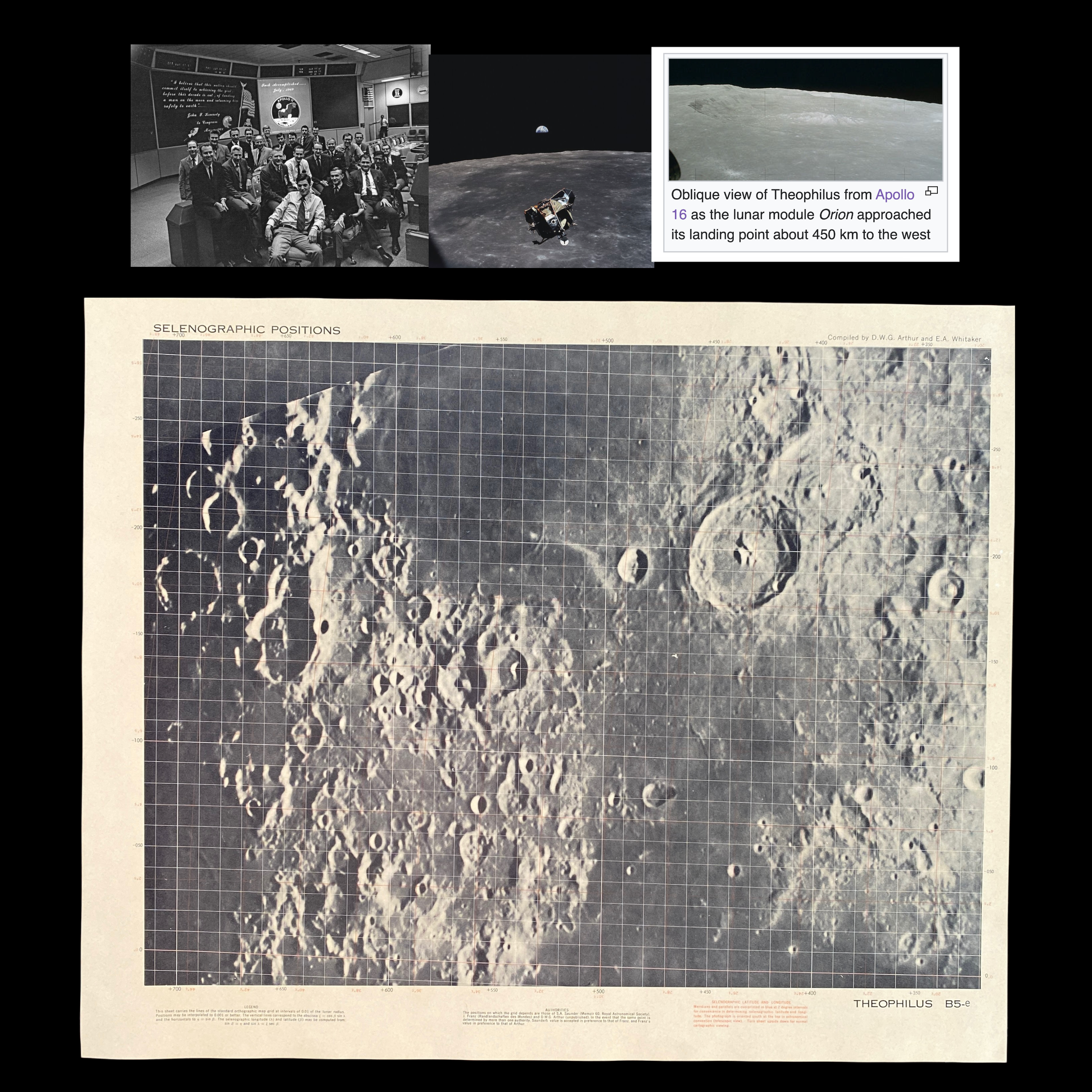

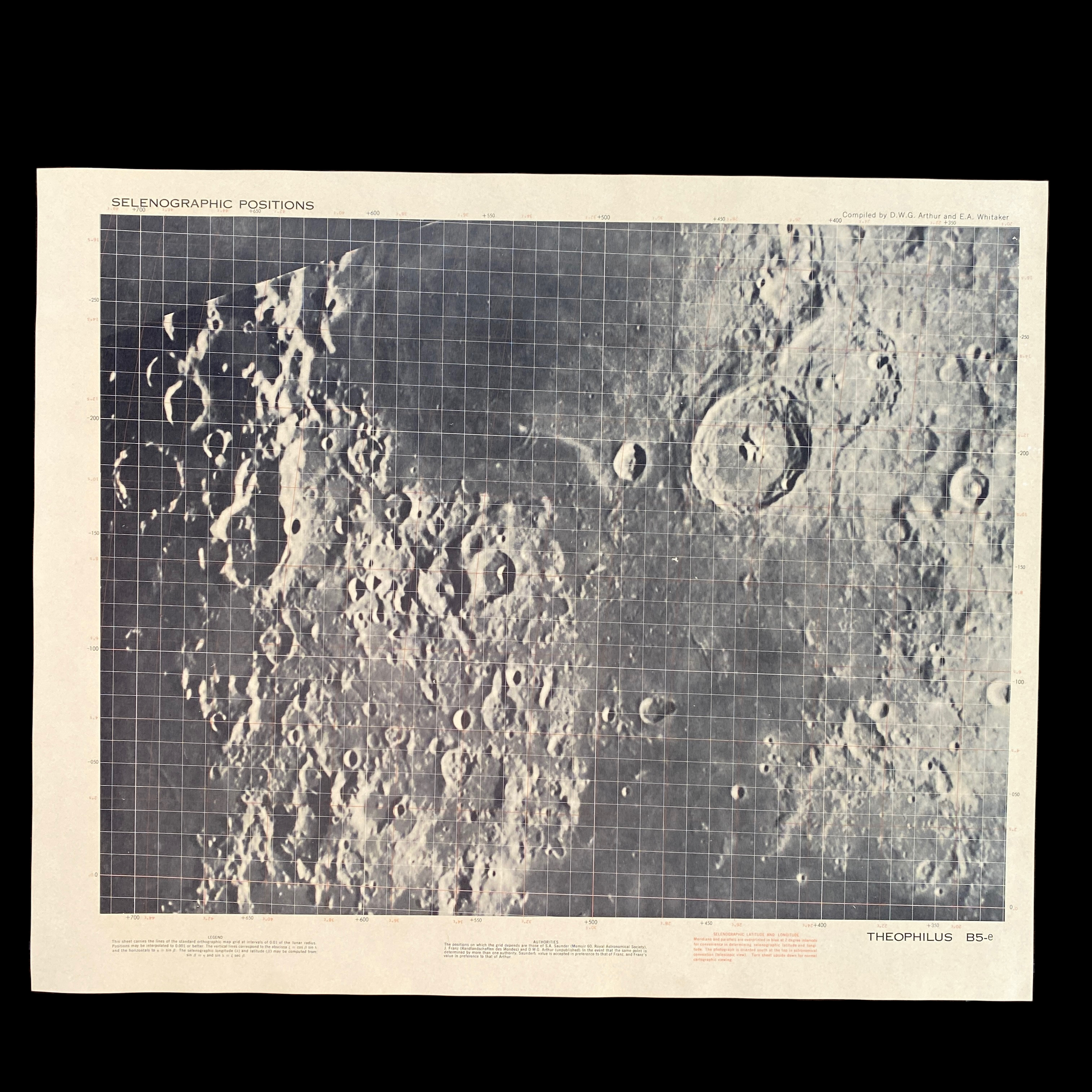











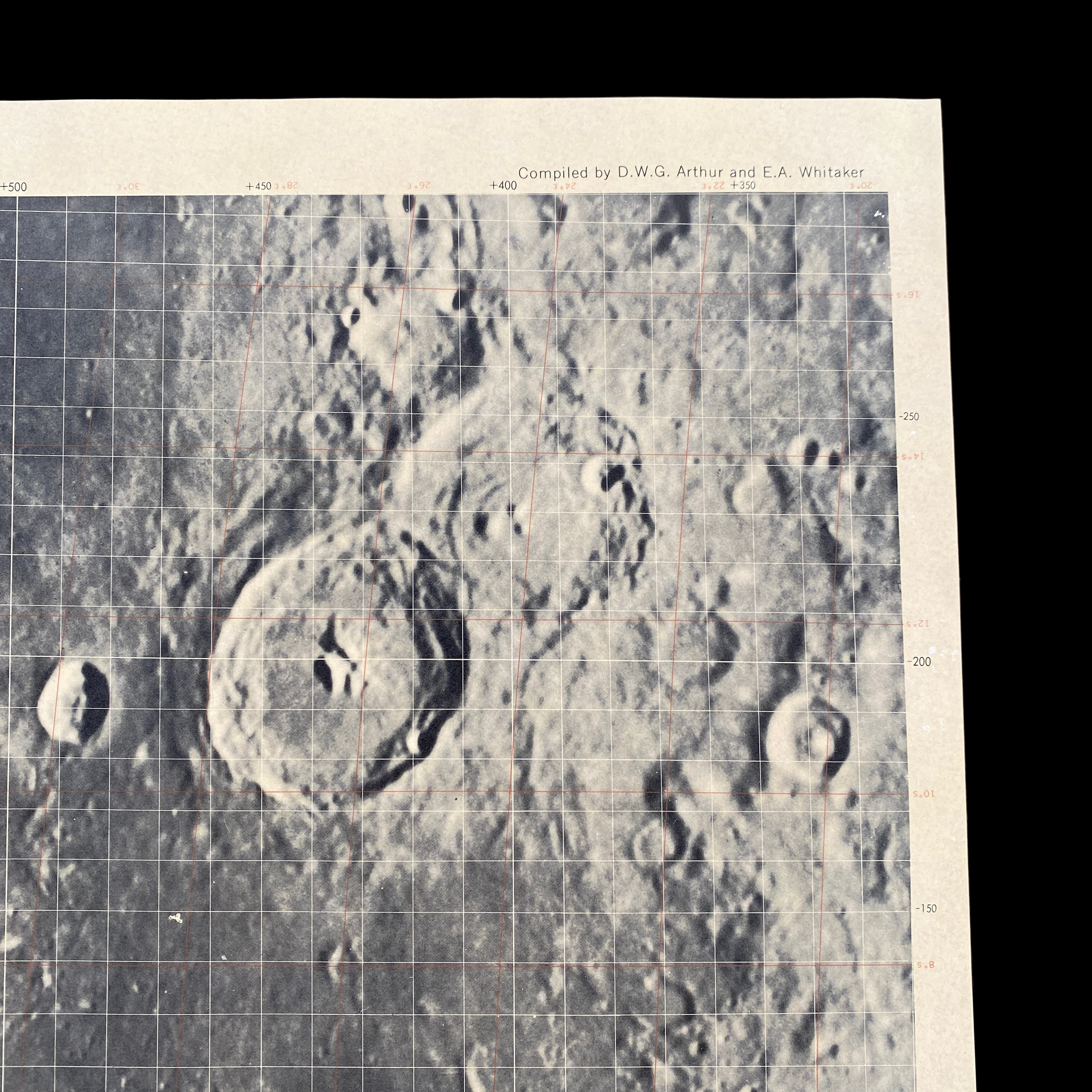
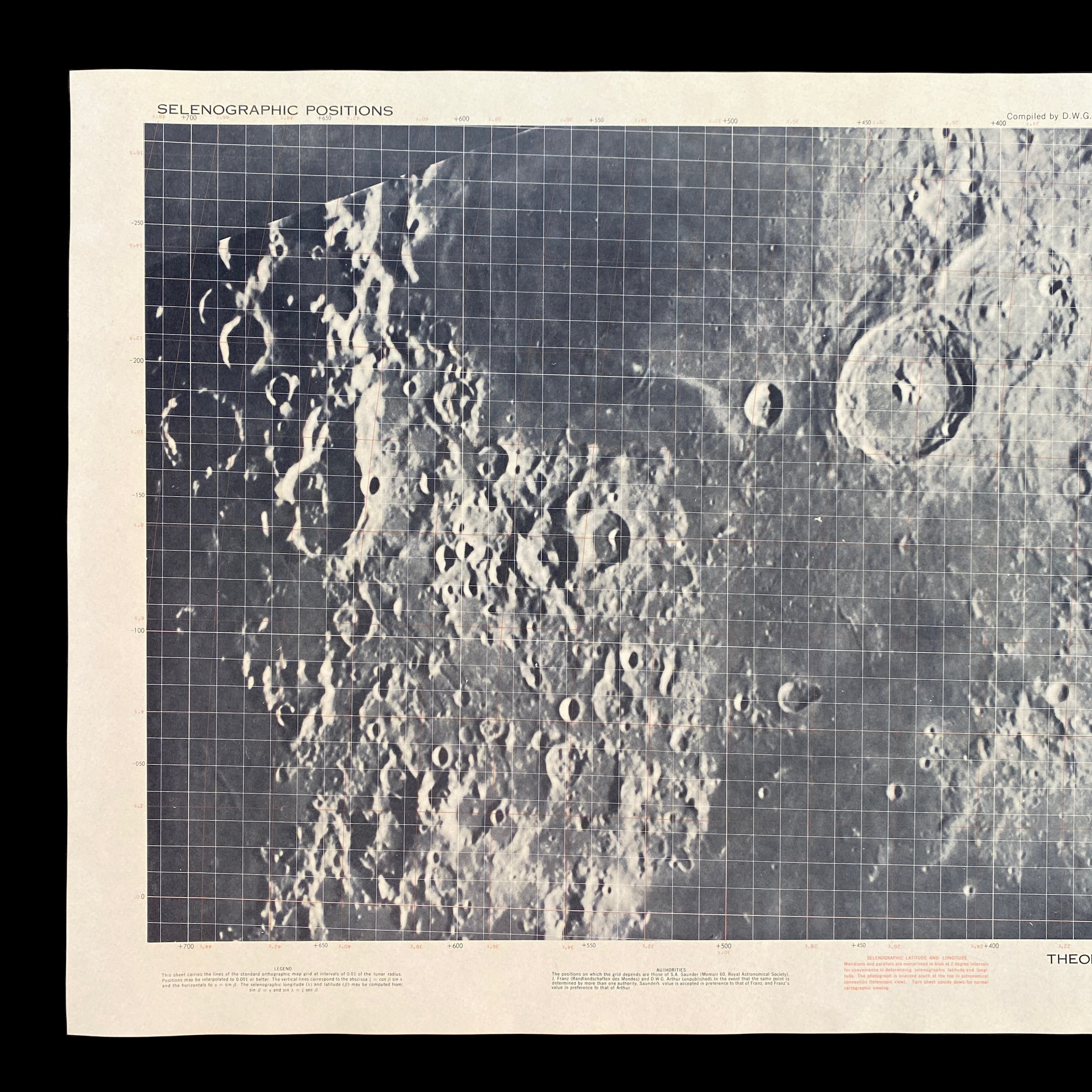
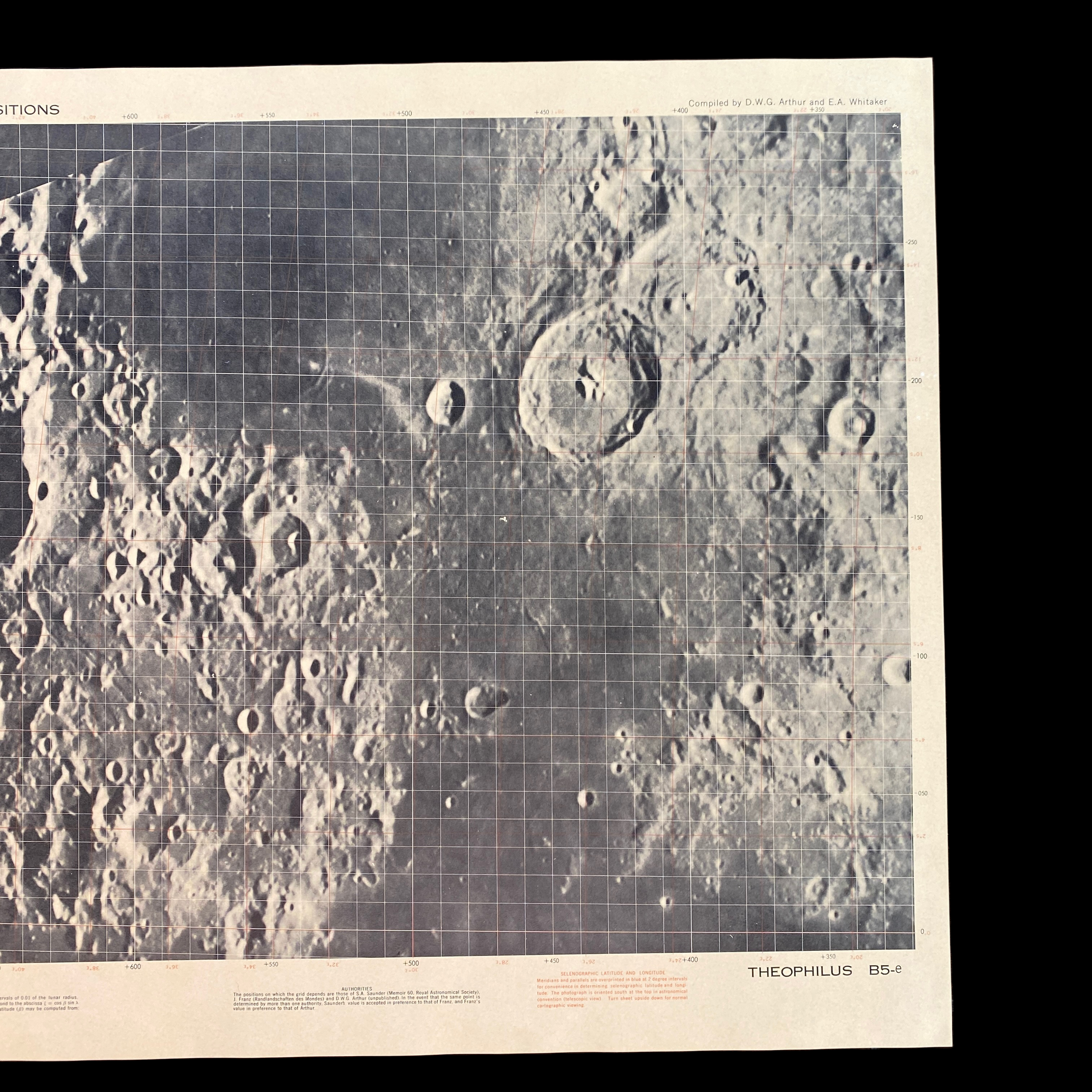

VERY RARE! June 1961 Early Apollo Program 1st EDITION Lunar Surface Moon Navigational Chart
Comes with hand-signed C.O.A.
This incredibly rare and museum-grade early Apollo Program 1st EDITION lunar moon navigational chart is dated June 1961 and was created less than one month following the famous President John F. Kennedy speech before a joint session of Congress on May 25, 1961.
In that speech, Kennedy emphasized the importance of space exploration to America's security and prestige, and he called on the nation to undertake this endeavour as a demonstration of American ingenuity and resolve. Kennedy's vision of the Apollo program was a major turning point in the space race and galvanized public support for the space program.
This rare and original early Apollo lunar exploration map was created under the direction of Gerard P. Kuiper, E.A. Whitaker, and D.W.G. Arthur as well as the newly founded Apollo program and United States Air Force. This rare and unseen early Apollo lunar chart of THEOPHILUS (near the landing site of Apollo 16) is an incredible piece of early Apollo and lunar space history.
Using this early Apollo lunar chart, E.A. Whitaker was able to select the landing sites for the Ranger and Surveyor spacecraft being sent to the moon to perform photographic reconnaissance. To accomplish this, he came up with a way to combine ultraviolet and infrared images of the lunar surface to make the first compositional maps of lava flows on the moon. In time, he developed what were, essentially, navigational charts for lunar exploration. E.A. Whitaker’s work on the Apollo 12 landing was an astronomical tour de force. Studying digital surface images sent back by Surveyor 3, which had landed on the Ocean of Storms in 1967, he identified two distinctive rocks in the crater where the spacecraft had come to rest. He then pored over photographs of 1,000 similar craters in the area that had been taken from space by the Lunar Orbiter and came up with a match. This would be the landing site for Apollo 12 in November 1969. Mr. Whitaker predicted that the astronauts Charles Conrad Jr. and Alan L. Bean would have to walk only a few hundred feet from their spacecraft to reach Surveyor 3, whose television camera was a key objective of their mission.
The Apollo program was one of the most ambitious and consequential space missions in human history. Launched by the United States in 1961, the program had the goal of landing a man on the Moon and returning him safely to Earth. The program was the result of a national competition between the US and the Soviet Union, the two superpowers of the Cold War, to demonstrate technological superiority and dominance in space.
The Apollo Program:
The Apollo program was one of the most ambitious and consequential space missions in human history. Launched by the United States in 1961, the program had the goal of landing a man on the Moon and returning him safely to Earth. The program was the result of a national competition between the US and the Soviet Union, the two superpowers of the Cold War, to demonstrate technological superiority and dominance in space.
The Apollo program was the brainchild of President John F. Kennedy, who announced the goal of landing a man on the Moon in a speech before a joint session of Congress on May 25, 1961. In that speech, Kennedy emphasized the importance of space exploration to America's security and prestige, and he called on the nation to undertake this endeavor as a demonstration of American ingenuity and resolve. Kennedy's vision of the Apollo program was a major turning point in the space race and galvanized public support for the space program.
The development of the Apollo program was an enormous undertaking that involved thousands of engineers, scientists, and technicians from a wide range of disciplines. NASA, the newly created national space agency, was tasked with leading the program, and the agency pulled together resources from government, industry, and academia to design and build the necessary hardware and software. One of the biggest challenges facing the Apollo program was developing the spacecraft that would take astronauts to the Moon and back. The Apollo spacecraft was a complex and sophisticated machine that consisted of three modules: the Command Module, the Service Module, and the Lunar Module. The Command Module was the spacecraft's cockpit and living quarters, while the Service Module provided propulsion and support services. The Lunar Module was the spacecraft that would land on the Moon and return astronauts to the Command Module.
The first manned mission of the Apollo program was Apollo 7, which was launched on October 11, 1968. The mission was a test of the spacecraft and its systems, and it demonstrated that the Apollo program was on the right track. The next step was Apollo 8, which was launched on December 21, 1968, and became the first manned mission to orbit the Moon. The mission was a critical success, and it demonstrated that the Apollo spacecraft was capable of making the journey to the Moon and back.
The Apollo program reached its climax with the launch of Apollo 11 on July 16, 1969. The mission was the first time that human beings had ever set foot on another celestial body. On July 20, 1969, Neil Armstrong, the mission's commander, became the first person to step onto the surface of the Moon. The moment was broadcast live to millions of people around the world, and it was one of the most watched events in human history. Armstrong's famous words, "That's one small step for man, one giant leap for mankind," became a symbol of human achievement and inspired people everywhere.
The Apollo program was not just a technological marvel, but it also had profound social and cultural consequences. The program helped to break down the barriers of national and cultural division, and it demonstrated the power of human cooperation and teamwork. The program also helped to spark a new wave of interest in science and technology, and it inspired a generation of young people to pursue careers in these fields.
In conclusion, the Apollo program was one of the greatest achievements of the 20th century. The program was a demonstration of American ingenuity, determination, and leadership, and it had a lasting impact on the world. The program's legacy lives on today, and it continues to inspire people to reach for the stars and explore the unknown. The Apollo program was a triumph of human spirit, and it will always be remembered as a shining example of what is possible when people work together towards a common goal.
Gerard Kuiper:
Gerard Kuiper was a Dutch-American astronomer who made significant contributions to the field of astronomy and astrophysics during the mid-20th century. He was born on December 7, 1905, in the city of Harenkarspel, Netherlands, and died on December 23, 1973, in Tucson, Arizona, at the age of 68.
Kuiper began his career in the Netherlands where he earned his PhD in astronomy from the University of Leiden in 1933. In 1936, he immigrated to the United States and began working at the Yerkes Observatory in Wisconsin. During this time, he made important observations of the Moon and other celestial bodies that helped to refine our understanding of their structure and formation.
One of Kuiper's most notable achievements was the discovery of several new bodies in the Solar System, including Miranda, the fifth moon of Uranus, and Nereid, a moon of Neptune. He also discovered several new asteroids and made important contributions to the study of comets and their origins.
Kuiper's work in the field of planetary science was equally impressive. He was one of the first astronomers to propose the existence of a belt of small, icy objects beyond the orbit of Neptune that later became known as the Kuiper Belt. This idea was later confirmed with the discovery of numerous Kuiper Belt objects, including the dwarf planet Pluto.
In addition to his discoveries and observations, Kuiper was also a pioneer in the field of theoretical planetary science. He developed several key theories about the formation and evolution of the Solar System, including the idea that the Solar System formed from a cloud of gas and dust that collapsed under its own gravity. He also proposed that the inner planets of the Solar System, including Mercury, Venus, Earth, and Mars, formed from the same material and were similar in composition.
Kuiper was also known for his work in the field of infrared astronomy. He was the first astronomer to detect the presence of methane and other gases in the atmospheres of Jupiter and Saturn, and he discovered that the surfaces of these planets were much colder than previously thought. This work helped to lay the foundation for the study of the atmospheres and climates of the outer planets.
Throughout his career, Kuiper was highly respected by his peers and was awarded numerous accolades for his contributions to the field of astronomy. He was a member of the Royal Dutch Academy of Sciences and was awarded the Henry Norris Russell Lectureship by the American Astronomical Society in 1969. He was also a fellow of the American Academy of Arts and Sciences and the National Academy of Sciences.
In conclusion, Gerard Kuiper was a pioneering astronomer who made important contributions to the field of astronomy and astrophysics. He discovered new celestial bodies, developed key theories about the Solar System, and made important observations that helped to shape our understanding of the universe. His work continues to influence astronomical research today and his legacy lives on in the numerous discoveries and advancements that have been made in the decades since his death.